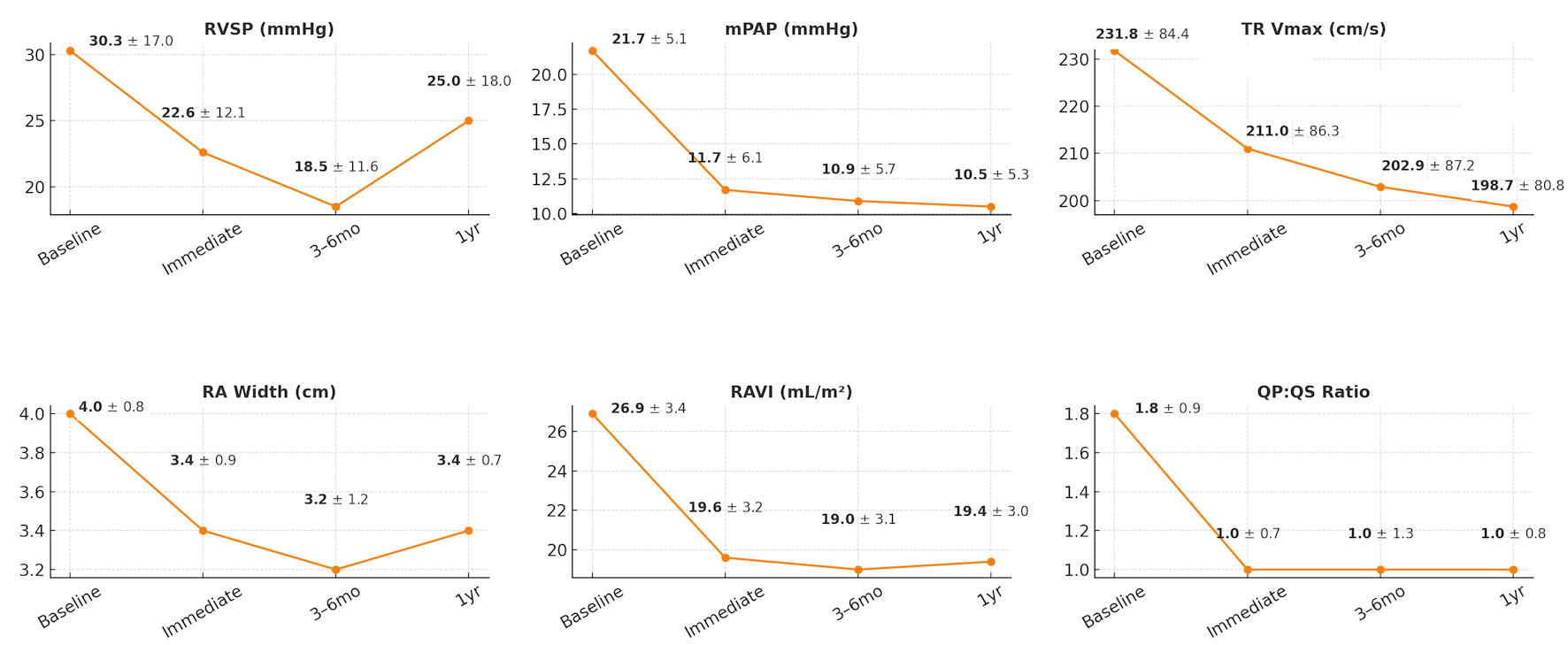
Figure 1. Serial echocardiographic and hemodynamic changes following transcatheter ASD closure. Line graphs demonstrate changes in right ventricular systolic pressure (RVSP), mean pulmonary artery pressure (mPAP), tricuspid regurgitation velocity (TR Vmax), right atrial (RA) width, right atrial volume index (RAVI), and QP:QS ratio from baseline through immediate post-procedure, at 3 - 6 months, and at 1-year follow-up. Values are shown as mean ± standard deviation. Significant reductions were observed in RVSP, mPAP, TR Vmax, RA dimensions, and RAVI after ASD closure, with improvements maintained at follow-up. mo: months; yr: year; ASD: atrial septal defect.
